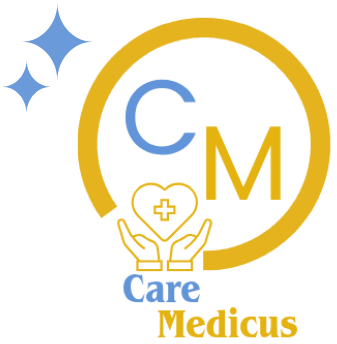The U.S. healthcare landscape is one of the most intricate financial systems in the world. Hospitals, clinics, and other care providers must navigate a maze of constantly changing regulations, evolving payment models, and complex billing codes—all while striving to deliver high-quality care and maintain financial stability. Within this challenging environment, revenue integrity has emerged as a cornerstone of sustainable financial health. What was once considered a specialized administrative concern is now recognized as a critical, organization-wide priority that directly influences a healthcare provider’s operational success and ability to serve patients.
Revenue integrity ensures that every clinical service rendered is accurately documented, coded, and billed in accordance with regulatory and payer requirements. When done effectively, it allows organizations to capture all appropriate revenue, maintain compliance, and minimize financial leakage. A robust revenue integrity strategy is not merely about avoiding loss—it’s about creating a proactive system that ensures financial accuracy, promotes efficiency, and strengthens the trust between clinical and administrative teams.
Defining Revenue Integrity and Its Core Purpose
At its foundation, revenue integrity refers to the disciplined process of ensuring that healthcare services are documented, charged, and reimbursed correctly. It creates a bridge between clinical documentation and financial reporting, guaranteeing that patient care activities are reflected accurately in billing records.
A strong revenue integrity program has several defining goals:
- Compliance: Healthcare organizations must comply with a broad set of regulations from federal and state agencies, as well as payer-specific billing rules. Ensuring compliance not only reduces audit risk and financial penalties but also preserves institutional credibility.
-
Accuracy: Accuracy involves aligning clinical documentation with appropriate coding and charges. This ensures that the organization is paid exactly what it is owed—no more and no less.
-
Efficiency: Streamlined workflows in charge capture, coding, and claims processing minimize unnecessary rework, reduce claim denials, and accelerate payment cycles.
-
Optimization: The ultimate goal is to identify and capture all legitimate revenue opportunities. Through continuous monitoring and data-driven insights, organizations can optimize financial performance while maintaining compliance.
Historically, healthcare finance teams focused primarily on revenue cycle management (RCM), which emphasizes payment collection after services have been provided. While RCM remains important, it is inherently reactive. Revenue integrity, on the other hand, adopts a proactive mindset. It seeks to prevent errors before they occur—beginning as early as patient registration and continuing beyond the point of reimbursement. In doing so, it transforms the way healthcare organizations think about financial stewardship.
Common Sources of Revenue Leakage
Revenue leakage refers to the discrepancy between the payments a healthcare provider expects and the amount it actually collects. Even a small percentage of leakage can result in millions of dollars in lost revenue annually. Understanding its root causes is essential to building a prevention strategy.
1. Inaccurate or Missed Charge Capture
Charge capture errors are among the most frequent causes of lost revenue. These mistakes can occur when services or supplies are not properly recorded, resulting in missed billing opportunities.
-
Manual Errors: Clinicians are often under intense time pressure, which increases the likelihood of incomplete or incorrect documentation. A missed entry for a diagnostic test or surgical supply can easily translate into thousands of dollars in unbilled revenue.
-
Outdated Chargemasters: The Charge Description Master (CDM) serves as the central list of all billable services, procedures, and items. If the CDM is not routinely updated to include new procedures or pricing changes, errors and omissions are inevitable.
-
Disconnected Systems: Many hospitals operate with multiple, siloed IT systems. When the electronic health record (EHR), laboratory, and billing platforms fail to communicate seamlessly, data can be lost during transfers—leading to unbilled or incorrectly billed items.
2. Documentation and Coding Errors
Medical coding is the language through which clinical activities are translated into standardized billing codes. Even minor discrepancies can have serious consequences.
-
Upcoding and Downcoding: Upcoding—billing for a higher-level service than was actually performed—is not only unethical but also exposes the organization to legal penalties. Downcoding, conversely, results in underpayment and missed revenue opportunities. Both are often the result of vague or incomplete documentation.
-
Insufficient Documentation: If a physician’s notes fail to justify the codes used, payers may deny or later recoup payments during an audit. Inadequate documentation remains one of the most persistent compliance and reimbursement challenges in healthcare.
3. Claim Denials and Underpayments
Even after charges are correctly entered and coded, claims can still face denials or underpayments.
-
Eligibility and Authorization Issues: One of the most preventable causes of claim denials is the failure to verify patient eligibility or obtain necessary preauthorizations.
-
Clerical or Data Entry Mistakes: Simple errors, such as incorrect patient identifiers or policy numbers, can lead to immediate claim rejections.
-
Contract Underpayments: Some organizations lack automated systems to verify that payments align with negotiated payer contracts. As a result, they may fail to pursue the difference when payers underpay.
These issues highlight why revenue integrity is not just about billing—it’s about creating coordinated systems that detect and prevent financial risk before it materializes.

The Transformative Role of Data Analytics in Revenue Integrity
Given the sheer volume of healthcare transactions and the complexity of modern billing processes, it is nearly impossible to manage revenue integrity manually. Data analytics has become an indispensable tool in identifying gaps, forecasting risks, and improving performance across the revenue cycle.
Discovering Hidden Revenue Opportunities: Analytics platforms can process millions of records to identify discrepancies between documented services and billed charges. For instance, an algorithm may detect that a specific surgical department consistently fails to include implant charges on certain procedures. By uncovering such trends, organizations can address root causes—whether they stem from workflow issues, outdated systems, or staff training gaps—and prevent future losses.
Anticipating and Preventing Claim Denials: Predictive analytics models can use historical data to flag claims that are likely to be denied before submission. These systems might identify missing documentation, incorrect coding patterns, or authorization gaps. By addressing these issues proactively, healthcare organizations can reduce denial rates and shorten their accounts receivable cycle.
Ensuring Payer Compliance and Accountability: Automated analytics tools can continuously compare actual payments with contracted reimbursement rates. When underpayments are detected, the system flags discrepancies for review and recovery. This automated variance detection helps organizations ensure that payers honor their agreements—something that would be far too labor-intensive to manage manually at scale.
Enhancing Decision-Making and Transparency: Beyond identifying financial leaks, data analytics enables leadership teams to make informed strategic decisions. Dashboards can display real-time metrics on denial trends, charge capture rates, and coding accuracy. These insights help executives allocate resources efficiently and foster accountability across departments.
Cultivating a Culture of Financial Accuracy and Accountability
Technology can enhance processes, but sustainable revenue integrity requires a cultural commitment. Every employee, from clinicians to coders, must understand their role in maintaining financial integrity.
Establishing Cross-Functional Revenue Integrity Teams: Breaking down silos between clinical, financial, and administrative departments is essential. A dedicated revenue integrity team should include representatives from finance, compliance, clinical documentation improvement (CDI), and health information management (HIM). Regular team meetings encourage collaboration, allowing staff to share data, identify recurring problems, and develop targeted solutions.
Investing in Continuous Education and Training: Healthcare billing rules evolve constantly as new codes, payer policies, and regulatory requirements are introduced. Ongoing training ensures that all staff remain current. Clinicians benefit from understanding how their documentation influences reimbursement, while coders and billing personnel need periodic refreshers on the latest compliance updates. Regular education helps prevent both inadvertent errors and systemic inefficiencies.
Aligning Organizational Goals and Incentives: For revenue integrity to succeed, it must be woven into the organization’s strategic priorities. Leadership should define measurable goals—such as reducing denial rates or improving charge capture accuracy—and align departmental incentives accordingly. When teams see how their work contributes directly to financial stability and patient care quality, motivation and accountability naturally increase.
Integrating Technology with Human Oversight: Even the most advanced analytics systems require human insight for interpretation and contextual decision-making. Combining automated tools with expert review ensures that data is used effectively and responsibly. This human–technology partnership creates a balanced approach where automation handles repetitive tasks and professionals focus on strategy, compliance, and continuous improvement.

Securing Financial Sustainability for the Future
At Care Medicus, we understand that financial integrity is the foundation of sustainable, high-quality healthcare. In an era defined by regulatory change, value-based care, and technological advancement, maintaining a strong financial framework is essential—not just for profitability, but for patient trust and organizational resilience.
Now is the time for healthcare leaders to take a proactive approach to revenue integrity. By integrating advanced analytics, refining operational processes, and fostering a culture of accountability, your organization can close revenue gaps, strengthen compliance, and reinvest in patient care.
Partner with Care Medicus to build a future where financial health and clinical excellence go hand in hand—ensuring that every dollar saved translates into better outcomes, greater transparency, and a stronger healthcare system for all.






Leave a Reply